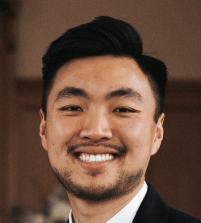
Patience in the Pandemic
Hurrying to wait in the time of COVID-19
By Lijia XieApril 2, 2020
“For time is the essential ingredient; but in the modern world, there is no time.”
–Rachel Carson, Silent Spring
Less than four months after the 2019 coronavirus disease (COVID-19) was first reported, public warnings and action have escalated quickly past their previously steady crescendo. Though early reports were uncertain about the extent of the contagion’s threat, the number of cases in the United States has since skyrocketed, and organizations around the country have responded urgently and dramatically. A wave of schools across the country—including the University of Chicago—asked students not to return following spring break, and students and teachers alike have been required to adapt quickly to online formats for the foreseeable future. Local, state, and even national governments have declared states of emergency or ordered lockdowns.
These large scale efforts at “social distancing” are grounded in sound epidemiology: slowing the rate of transmission is necessary in order to avoid overburdening healthcare systems and leaving doctors in the impossible dilemma of choosing which patients to treat and not treat, as is currently the case in Italy. History also offers its proof: public health experts note that in the 1918 flu pandemic, non-pharmaceutical interventions (NPIs), like the ones currently being enacted, implemented at an early phase of the epidemic, drastically lowered peak mortality rates and total mortality. Moreover, given a new virus with even higher rates of transmission, each day that passes without intervention can result in magnitudes of difference in outcomes of infection. The urgency of this moment has required collective hurrying and quick response.
But now we must wait.
In the midst of this pandemic, we might find some help in dealing with the transition from an initial period of hurriedness to an extended season of waiting by turning to Rachel Carson for her insights in responding to another collective emergency, albeit of a different nature. Published in 1962, her book Silent Spring was then, as it is now, a monumental work in environmentalism, inciting public outrage regarding the damaging use of dichlorodiphenyltrichloroethane—more commonly known as DDT—that led to its eventual ban. In her trenchant diagnosis of the problem, Carson presents the pronouncement cited at the top of this essay about a modern lack of time in order to underscore the dire urgency of the situation; the reason for this lack, she explains, is the “impetuous and heedless pace” of manmade, technological innovation. Nonetheless, instead of dismissing such a pace, she pleads for counteractive action at a commensurate speed.
Since Carson’s time we have only accelerated this innovation, in order to continue to reap the material benefits it provides. Ironically, the same breakneck pace of technology has created the conditions—of skyrocketing population density in urban environments, of an interconnected global world—in which the current coronavirus is such a huge threat. Her observation seems even more prescient in the present situation, when the urgent call to quarantine is not meant to avoid more infections altogether, but to spread the case out over a longer window of time in order to ensure healthcare resources are not overburdened; in short, fast action might buy us more time.
Beyond the epidemiological necessity, there are good reasons to embrace this sort of urgency, including religious ones. In various traditions, urgency spurred on by eschatology, more specifically by apocalypse, is a common feature. Are the dire visions of Daniel, John of Patmos, the Prophet Muhammad, or even the Buddha, so different than Carson’s picture in Silent Spring of a blighted, desolate American town, or our own worst-case projections of today’s ongoing climate crisis or coronavirus pandemic?
Yet what happens, like in our present moment, when our internal conditions also cause us to see disasters every day and all around, and apocalypse seems to be upon us already? The more incisive and troubling ramification of Carson’s statement is its psychological dimension: with social media, the sharing economy, and other technologies ever decreasing the lag-time between action and reward, it is a plausible, resonant, and oft-repeated hypothesis—though the scientific evidence is still developing—that our expectations and attention spans have been short-circuited to great detriment. Unfortunately, as impatient as we are in waiting for reward, we are even more heedless in response to pain. So, we perceive every social, political, and moral obstacle in the most extreme terms, and believe we must respond swiftly in kind. The danger is, I think, that this state of constant urgency produces anxiety that is more paralyzing than productive, particularly when our individual efforts seem intractable or ineffective.
As we’ve discovered after weeks isolated at home, panic and destabilization are also the more insidious, unexpected damage of COVID-19. Yet, perhaps quarantine also provides us a well-needed opportunity to slow down, in order that we may “keep calm and carry on.” In social and political realms, in particular, a necessary—though not sufficient—addendum to our blitzing impulses for good might be to remember patience. Here we might return to Carson, who, despite her urgency, understands that the course of nature is long, and that life finds endless ways to adapt. Have we forgotten that we are part of an arc of human history that began so long ago, and indeed, an arc of life that is already billions of years long?
To be sure, the coronavirus pandemic absolutely does require urgent action. However, in this biological arena, there are limits to what we can do, as our time in quarantine has made abundantly clear; these limits are true in social and political realms, too, where we may never change the minds and wills of every person in our neighborhoods, cities, or countries to conform to our ideals. To prioritize patience at this moment, however, is not to suggest that we do nothing. Rather, we must urgently do what we can and afterward be willing to wait for the fruits of our labors to come. Perhaps surprising to some, there is a comforting power of eschatology, which lies not in the inevitability of destruction, but in the possibility of deliverance. For now, no matter what the doomsayers shout, tomorrow the sun will still rise; there is time. For later, we must have faith and continue to hope that on the other side of apocalypse there is salvation. ♦
Sightings is edited by Joel Brown, a PhD Candidate in Religions in the Americas at the Divinity School. Sign up here to receive Sightings via email. You can also follow us on Facebook and Twitter. The views and opinions expressed in this article are those of the author and do not necessarily reflect the position of the Marty Center or its editor.
Photo Credit: Alina Nasibulina


